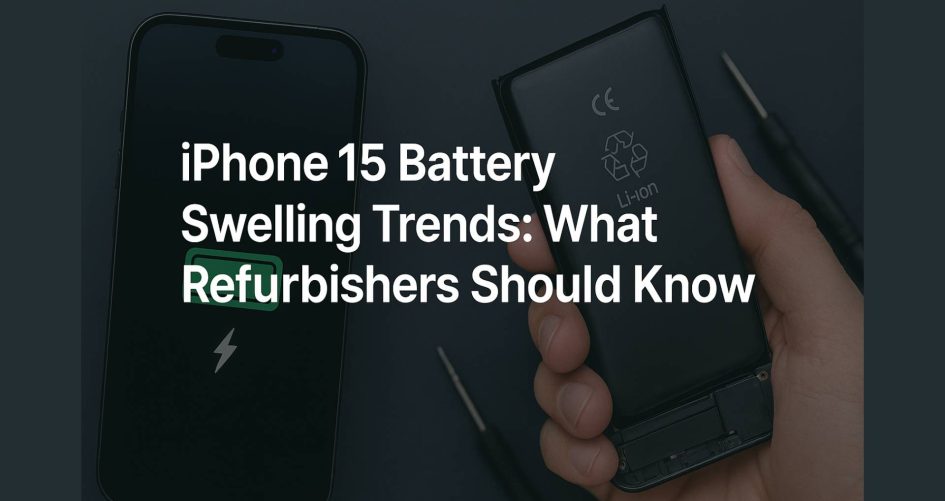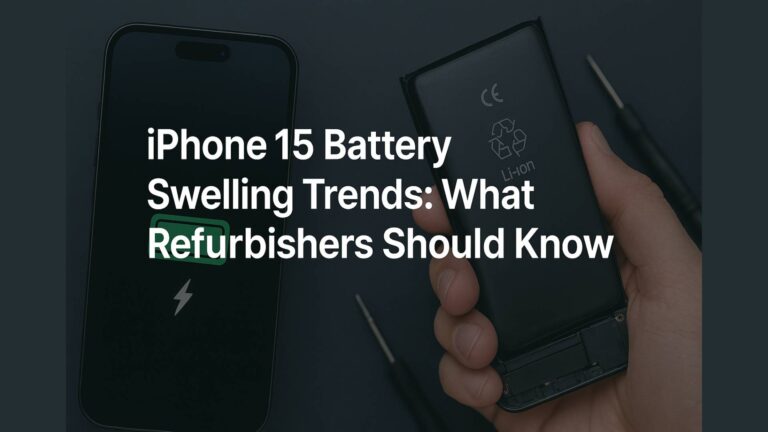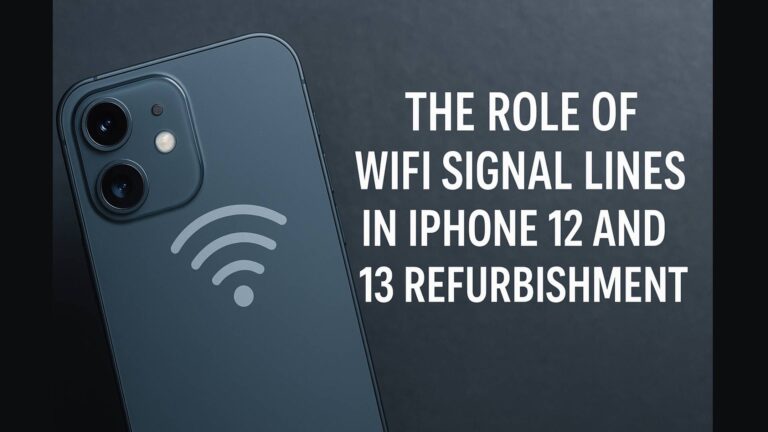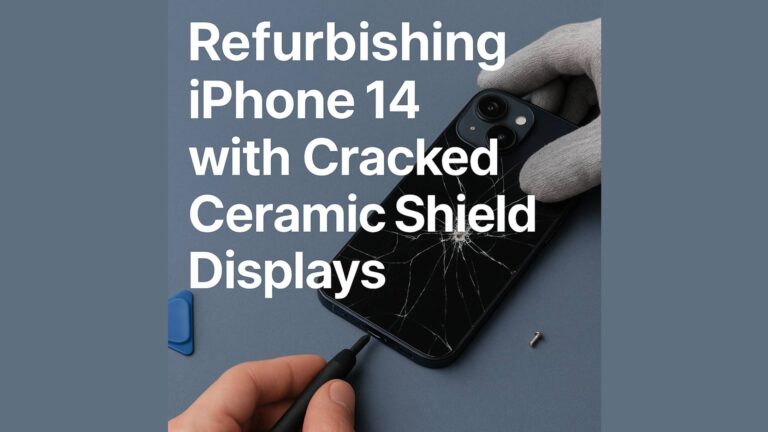The release of the iPhone 15 brought sleek hardware and advanced performance—but along with it, growing concerns around the iPhone 15 battery issue. As more refurbished units hit the secondary market, reports of swollen batteries have become increasingly common. This detailed swollen battery guide explains what technicians and wholesalers must know—especially those involved in battery safety export and large-scale refurbishing.
Let’s explore the symptoms, causes, handling procedures, and compliance requirements every refurbisher should be aware of when dealing with swelling battery problems in Apple’s latest lineup. Know more.
Why the iPhone 15 Battery Issue Is Gaining Attention
Just months after the iPhone 15 launch, third-party repair centers and refurbishers began noticing an uptick in complaints related to device overheating, screen bulging, and touch unresponsiveness. These issues often traced back to one culprit: iPhone 15 battery swelling.
For wholesalers and repair shops working with thousands of units, catching these battery issues early is key—not just for quality control, but also for compliance with international battery safety export standards.
Anatomy of an iPhone 15 Battery
The iPhone 15 uses a high-density lithium-ion battery with optimized cell chemistry. It’s built with:
- A graphite anode and lithium cobalt oxide cathode
- An electrolyte layer susceptible to chemical breakdown
- A flexible, aluminum shell that expands with internal gas buildup
While Apple has advanced battery management software, no algorithm can fully prevent failure from hardware-level defects.
Common Symptoms of a Swollen Battery
If you suspect battery swelling, look for:
- Raised or separating screen, especially near the top or sides
- Unusual warmth even during standby mode
- Quick battery drain, or devices shutting off randomly
- Audible clicks or creaks from frame pressure
In a refurb facility, detecting these signs early prevents safety incidents and customer dissatisfaction.
Root Causes of iPhone 15 Battery Swelling
Swelling can occur for multiple reasons:
- Overcharging or prolonged charging on fast-chargers
- Exposure to extreme temperatures during shipping or storage
- Manufacturing defects, particularly in early batches
- Using damaged third-party chargers or adapters
While Apple enforces high QC standards, swelling is still a reality even with original batteries.
Swollen Battery Guide: Identifying and Isolating Damaged Units
Technicians should use a combination of:
- Visual inspection
- Battery health diagnostics via iOS (Settings > Battery > Battery Health)
- Third-party apps like CoconutBattery or 3uTools (for cycle counts)
Important: Never puncture or press on a swollen battery—it may ignite or leak.
Battery Safety Export Concerns for Refurbishers
Shipping batteries—especially damaged ones—is highly regulated. When exporting refurbished iPhones, follow these battery safety export rules:
- UN3480 (battery only) and UN3481 (battery with equipment) labeling
- Use fireproof pouches for swollen or suspect units
- For air freight: submit Material Safety Data Sheets (MSDS) and IATA certifications
- Declare state of charge (SoC) accurately—never over 30% for damaged batteries
Non-compliance can lead to customs delays, penalties, or flight bans.
Repair vs Replace: What Should Technicians Do?
When facing a swollen battery:
| Option | Advice |
| Recompression | NEVER attempt this. It’s unsafe. |
| OEM Battery Replacement | Safest and most recommended route |
| Third-Party Battery Use | Only if tested and certified by the supplier |
Prioritize battery safety over cost-cutting. Always choose certified batteries that support iOS voltage management protocols.
Safe Disposal of Swollen iPhone 15 Batteries
Lithium-ion batteries pose an environmental hazard if discarded improperly. To stay compliant:
- Use e-waste certified recyclers
- Avoid landfills or general trash
- In the U.S., follow EPA battery disposal guidelines
- In the EU, adhere to WEEE Directive (Waste Electrical and Electronic Equipment)
Store waste batteries in ventilated fireproof bins until pickup.
Tools and PPE Required for Safe Battery Handling
Every repair bench should be equipped with:
- Anti-static mats and grounding straps
- Insulated gloves
- Plastic spudgers (no metal tools)
- Battery-safe tweezers
- Fireproof battery bags or containers
- CO₂ fire extinguishers nearby
Even a small lithium battery can cause serious harm if mishandled.
Step-by-Step: Replacing a Swollen iPhone 15 Battery Safely
- Power off the device completely
- Use a heat pad to soften adhesive (max 60°C)
- Gently lift the screen from the frame
- Disconnect the battery flex before any other component
- Slowly lift the battery using plastic tools
- If resistance is felt, do NOT force—apply more heat or isopropyl alcohol
- Install new battery, ensuring proper alignment
- Test device thoroughly before sealing
Post-repair, run battery health diagnostics and verify normal voltage range.
Quality Control Standards for Refurbished iPhone 15 Units
To avoid returns and maintain trust, check:
- Battery cycle count (under 500 preferred)
- Peak Performance Capability
- Temperature during charging
- No screen lift or flex post-repair
Document each unit’s test results with tags or software reports.
Risk to End Users: Why Battery Safety Matters in Refurbishing
Reselling units with compromised batteries puts users at risk of:
- Fires or overheating
- Chemical burns from leaking batteries
- Device malfunction or motherboard damage
Beyond user safety, it’s a legal liability. Negative reviews, product returns, or worse—potential lawsuits.
iPhone 15 vs Previous Generations: Battery Reliability Comparison
| Model | Reported Swelling Incidents | Battery Capacity |
| iPhone 13 | Low | 3,240 mAh |
| iPhone 14 | Moderate | 3,279 mAh |
| iPhone 15 | Rising | 3,349 mAh |
The iPhone 15 features tighter internal spacing and stronger back glass adhesion, which may conceal early swelling signs—leading to delayed diagnosis.
Tips to Minimize Battery Swelling in Storage & Transit
For safe inventory management:
- Store at 40-60% charge
- Avoid exposure to temperatures below 5°C or above 35°C
- Rotate stock regularly to prevent prolonged storage
- Never place devices near heat sources or in sealed plastic bags for long periods
These tips help maintain battery integrity while minimizing safety concerns.
Wholesale Refurbishing: How to Scale Battery-Safe Operations
To meet volume while staying compliant:
- Train staff in battery inspection and replacement
- Partner with certified recyclers for disposal
- Use barcode systems to track battery age and health
- Work with vetted battery suppliers that meet ISO and CE standards
- Stay updated with battery safety export documentation, especially for EU and Asia-bound shipments
FAQs: Swollen Battery Guide for iPhone 15
Q1. Can I flatten a swollen iPhone 15 battery for reuse?
Absolutely not. It’s a severe safety risk.
Q2. What’s the safest way to identify battery swelling?
Visual inspection and physical screen bulging are the most common signs.
Q3. Are all swollen batteries defective?
Yes. Any sign of swelling means the cell is compromised and should be replaced.
Q4. Do Apple-certified batteries swell too?
Rarely—but early batches of any product line may have defects.
Q5. Can I ship a phone with a slightly swollen battery?
No. It violates air freight safety regulations.
Q6. What’s the ideal storage condition for refurbished iPhones?
40–60% battery charge, room temperature, and low humidity.
Conclusion: Staying Ahead of iPhone 15 Battery Issue Trends
Swelling batteries are more than just a nuisance—they’re a serious hazard for users and a threat to business credibility. By understanding the iPhone 15 battery issue, following this swollen battery guide, and ensuring strict battery safety export practices, refurbishers can lead the market in safety, trust, and compliance.
Stay proactive, stay informed, and build your business on safe, smart battery handling. Know more.





